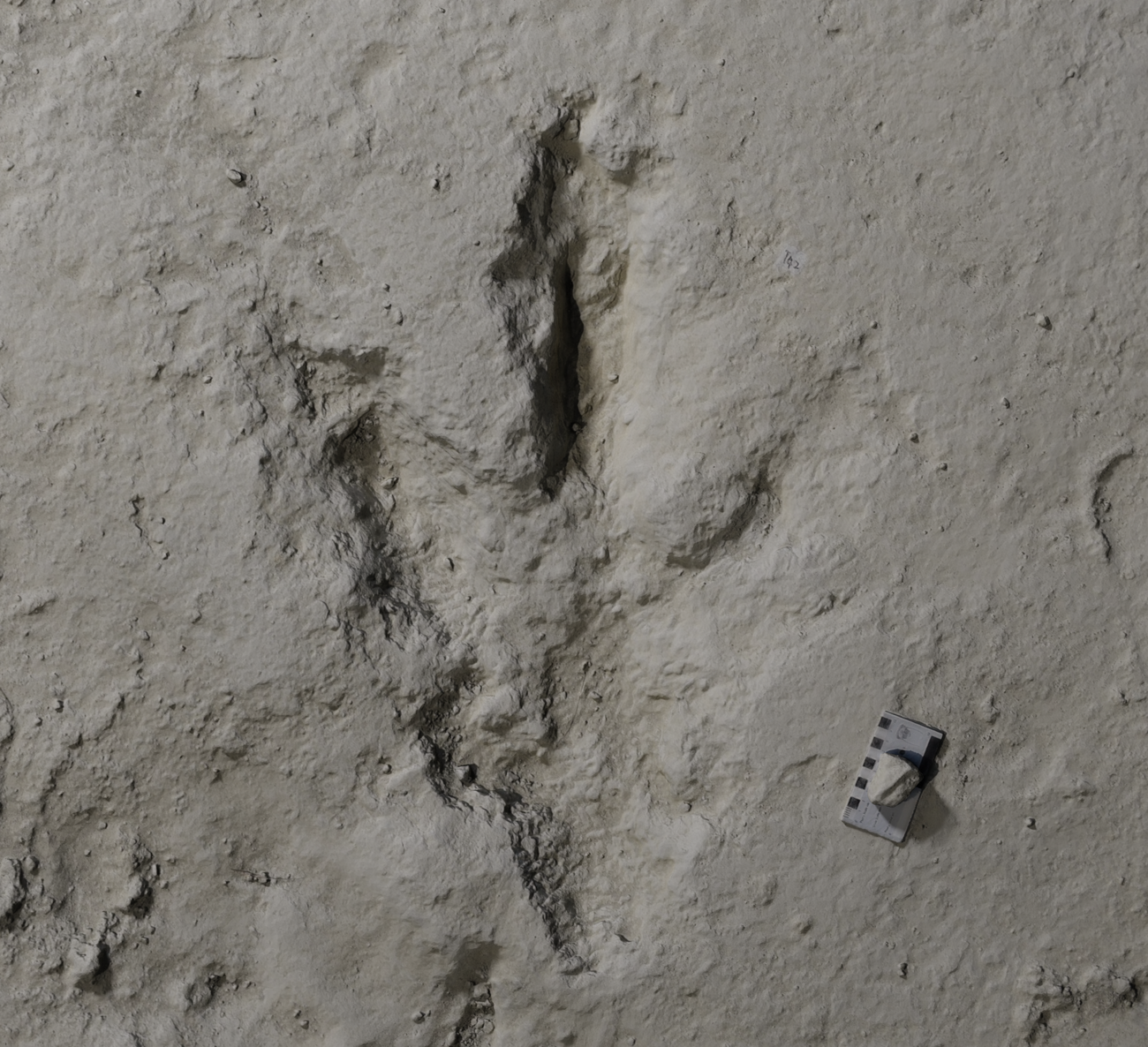About 166 million years ago, dinosaurs walked slowly and deliberately across a shallow lagoon in what is now modern-day Britain. Some of these Jurassic giants moved at a leisurely pace, while others may have hurried, with their footsteps making a squelching sound in the mud.
Back then, such an event was just a regular occurrence where dinosaurs were migrating in large groups. However, the terrain helped preserve these brief moments of dinosaurs crossing over – even though the dinosaurs are now extinct, their footprints remain behind. Researchers and volunteers have now uncovered a trail of dinosaur tracks – a site containing over 200 impressions, which is the largest collection of its kind found in the United Kingdom.
“Picking up where they left off, you can get a glimpse of what life must have been like back in those times, with these enormous beings wandering freely, living their lives without interruption.”
Dinosaur tracks were uncovered by a quarry worker named Gary Johnson, who was operating a mechanical digger at the time. As Johnson excavated the site, his equipment kept hitting unusual blisters in the earth. While these might not be notable on their own, it was the consistency of these lumps, spaced about every ten feet, that caught Johnson’s eye.
Johnson had good reason to believe that the regular impressions might be scientifically important, given a past discovery of a 40-foot-long dinosaur track nearby in 1997. He wondered if the ground holes could be a second hotspot for dinosaur activity. To get a confirmed answer, he brought in a team of experts.
He was struck by the surreal feeling when he became the first person to spot the items, feeling a mix of surprise and astonishment,
with brushes.
The discovery of this prehistoric “megresistodont” in Richmond County, Virginia, and its study marked the beginning of modern-day paleontology in 1824.

The series of tracks could extend even farther, potentially originating from Oxford University.
The researchers believe a storm deposited sediment on top of the tracks, shielding them from erosion.
Based on the impressions in the ground, researchers infer that the sauropod was present before the carnivore. They speculate the predator was possibly tracking its prey, though it’s not entirely clear. Meanwhile, one of the larger sauropod tracks on the largest foot impression appears out of order, suggesting the massive creature could have briefly halted to glance backward.
“Along with other fossils like burrows, seashells, and ancient plant life, we can recreate the murky, swampy environment the dinosaurs inhabited.”
Advanced technology and high-quality digital recordings will enable scientists to uncover more information about the everyday lives of dinosaurs. During the excavation, the team created molds from individual impressions and took over 20,000 photographs, which will enable researchers to create detailed 3D models of the markings and terrain. This new data will help scientists determine the size, stride, and pace of the animals involved, as well as how they may have interacted with one another. By using computer simulations, researchers may even be able to recreate the dinosaur’s movements in a real-life setting.
While bones offer a static picture of the past, providing information on structure and physical form, footprints give us a moving image of history, capturing the everyday lives of dinosaurs.
She was part of the team that worked on uncovering the dinosaur tracks last summer. “It’s like seeing human footprints on a trail ahead; a dinosaur track impression gives the sense that the creature was a long way off in the direction the tracks lead, but it was only there a split second ago.”
When paired with the bones and helped by modern technology, these ancient imprints in the ground provide a comprehensive view of the prehistoric animals that once roamed freely, unaware that future humans would one day look at their footprints in awe many millions of years later.
